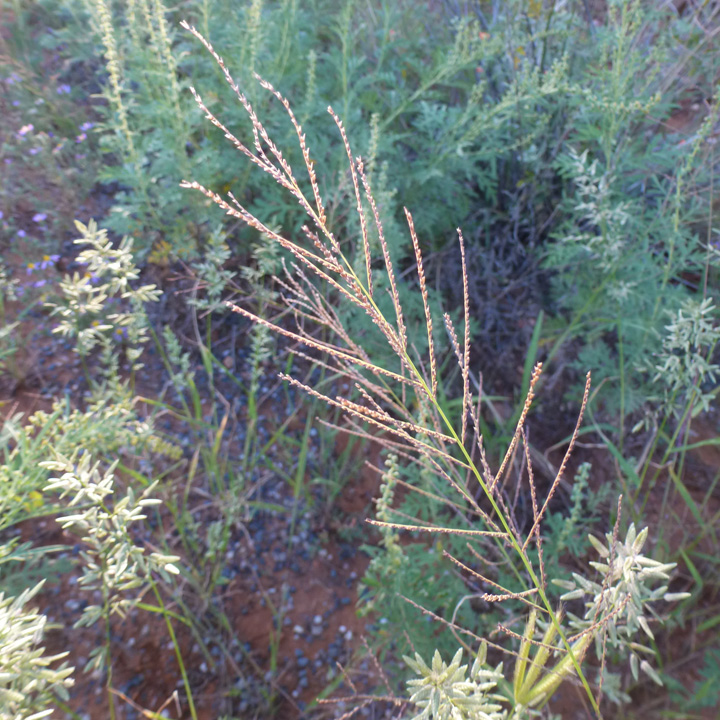Leptochloa
|
Family: Poaceae |
Plants annual or perennial; cespitose. Culms (3)10-250(300) cm, usually ascending to erect, often geniculate at the lower nodes, occasionally prostrate and rooting at the lower nodes, often branching at the aerial nodes; nodes usually glabrous; internodes usually hollow. Leaves usually primarily cauline, occasionally in basal rosettes; sheaths open; ligules 0.2-10(15) mm, obtuse to attenuate, usually membranous, sometimes ciliate; blades flat, involute when dry, usually ascending to erect, apices attenuate. Primary inflorescences terminal, panicles of 2-150 non-disarticulating, spikelike branches, usually exceeding the leaves; branches 1-22 cm, digitate, subdigitate, or racemose on the rachises, 1-sided, usually spikelet-bearing throughout their length, spikelets in 2 rows, axes terminating in a functional spikelet, lower branches occasionally with secondary branching; secondary panicles sometimes present, axillary to and concealed by the lower sheaths, their florets not disarticulating; disarticulation in the primary panicles beneath the florets. Spikelets rounded to slightly keeled on the back, distant to tightly imbricate, not conspicuously pubescent, with (2)3-12(20) bisexual florets; rachillas rarely prolonged. Glumes usually unequal, sometimes subequal, exceeded by the florets, membranous, rounded to weakly keeled, 1-veined, veins scabrous, apices unawned (rarely mucronate); lower glumes 0.5-4.9 mm; upper glumes 0.9-6 mm; florets usually bisexual; calluses distinct or poorly developed, glabrous or pubescent; lemmas membranous, usually pubescent at least over the lower portion of the veins, 3(5)-veined, apices entire or minutely bilobed, unawned, mucronate, or awned; paleas usually subequal to the lemmas, membranous or hyaline; anthers 1-3, 0.1-2.7 mm. Caryopses obovate to elliptic, falling free of the lemmas and paleas. x = 10. Name from the Greek leptos, slender, in reference to the panicle branches, and chloa, grass. Spikelets 2-12-fld, articulated above the glumes; glumes 1-veined; lemmas 3-veined, rounded on the back, obtuse or truncate to acute or shortly bifid at the tip, the veins sometimes excurrent into a short central awn or minute lateral teeth; palea broad, nearly as long as the lemma; annual (all ours) or perennial, usually weedy grasses, often branched from the base, with scarious ligule and numerous long spike- like racemes disposed along a central axis to form a large panicle. (Diplachne) 40, warm reg. Gleason, Henry A. & Cronquist, Arthur J. 1991. Manual of vascular plants of northeastern United States and adjacent Canada. lxxv + 910 pp. ©The New York Botanical Garden. All rights reserved. Used by permission. |

